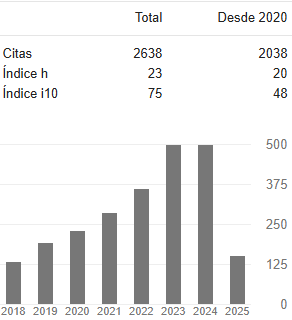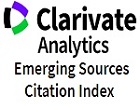Definition of a model for measuring risk analysis of security information applying fuzzy logic and systems based on knowledge
DOI:
https://doi.org/10.31908/19098367.615Keywords:
Fuzzy logic, impact, knowledge-based systems, Matlab, prototype, risk, threat, vulnerability.Abstract
Information is the most valuable asset of an organization, and therefore, it is necessary to implement increasingly sophisticated techniques to protect it. Among the different techniques that can be used to measure risk analysis information, we can count security fuzzy logic and knowledge-based systems. The application of the properties of fuzzy logic allows risk analysis of information security from the approaches and experiences of specialists, creating a fuzzy system that takes into account the subjectivity of analysis and in turn it is a tool of simple use.
Downloads
References
R. Puello. “Procesado y optimización de espectros RAMAN mediante técnicas de lógica difusa: Aplicación a la identificación de materiales pictóricos”. Universidad Politécnica de Cataluña. 2005.
Proyecto de Norma Técnica Colombiana NTC-ISO 27005. Bogotá D.C.: ICONTEC, 2008. 96p.
A. Angarita y C. Tabares. Análisis de riesgos para el proceso administrativo: Departamento de Informática en la Empresa de Acueducto y Alcantarillado de Pereira S.A. E.S.P., basados en la Norma ISO 27005. Trabajo de grado Especialista en Redes de Datos. Pereira: Universidad Tecnológica de Pereira. Facultad de Ingenierías Eléctrica, Electrónica, Física y Ciencias de la Computación, 2012. 104 p.
J. Burgos y P. Campos. Modelo Para Seguridad de la Información en TIC. 2008, versión 2. Available from Internet: http://ceur-ws.org/Vol- 488/paper13.pdf
J. Ramió. Libro Electrónico de Seguridad Informática y Criptografía. Madrid, España. 2006. 1106 diapositivas
P.Ponce. Inteligencia Artificial con aplicaciones a la ingeniería. 1 ed. México D.F.: Editorial Alfaomega, 2011. 348 p. ISBN 978-84-267- 1706-1.
E. Cestero. Un enfoque borroso para el análisis y la gestión de riesgos en sistemas de información. Trabajo de Grado Máster Universitario en Inteligencia Artificial. Madrid: Universidad Politécnica de Madrid. Facultad de Informática, 2013.106 p.
T. Feagans and W. Biller. Fuzzy Concepts in the Analysis of Public Health Risks. Springer US. 1980. 391-404 p.
A. Markowski and S. Mannan. Fuzzy Risk Matrix. Journal of Hazardous Materials, Volume 159, Issue 1, 15 November 2008. 152- 157 p.
B. Martín del Brío y A. Sanz. Redes neuronales y sistemas borrosos. 3 ed. España: Ra-Ma Editorial, 2006. 442 p. ISBN 978-84-7897-743-7.
A. Benavides. Diseño y aplicaciones de un sistema de priorización de riesgos basado en lógica difusa y proceso analítico jerárquico. Trabajo de grado Ingeniero Químico. Bucaramanga: Universidad Industrial de Santander. Facultad de Ingenierías Físico-Químicas, 2010.79 p.
S.N. Sivanandam, S. Sumathi and S.N. Deepa. Introduction to Fuzzy Logic using Matlab. Editorial Springer, 2007. 441 p.
C. Alberts and A. Dorofee. Managing Information Security Risks: The OCTAVE Approach. Addison-Wesley, 2002. 512 p. ISBN 0321118863.
S-M. Chen. New Methods for subjective mental workload assessment and fuzzy risk analysis. En: Cybernetics and Systems: An International Journal, Volume 27, Issue 5, 1996.
Downloads
Published
Issue
Section
License
Copyright (c) 2019 Entre ciencia e ingeniería

This work is licensed under a Creative Commons Attribution-NonCommercial 4.0 International License.



















